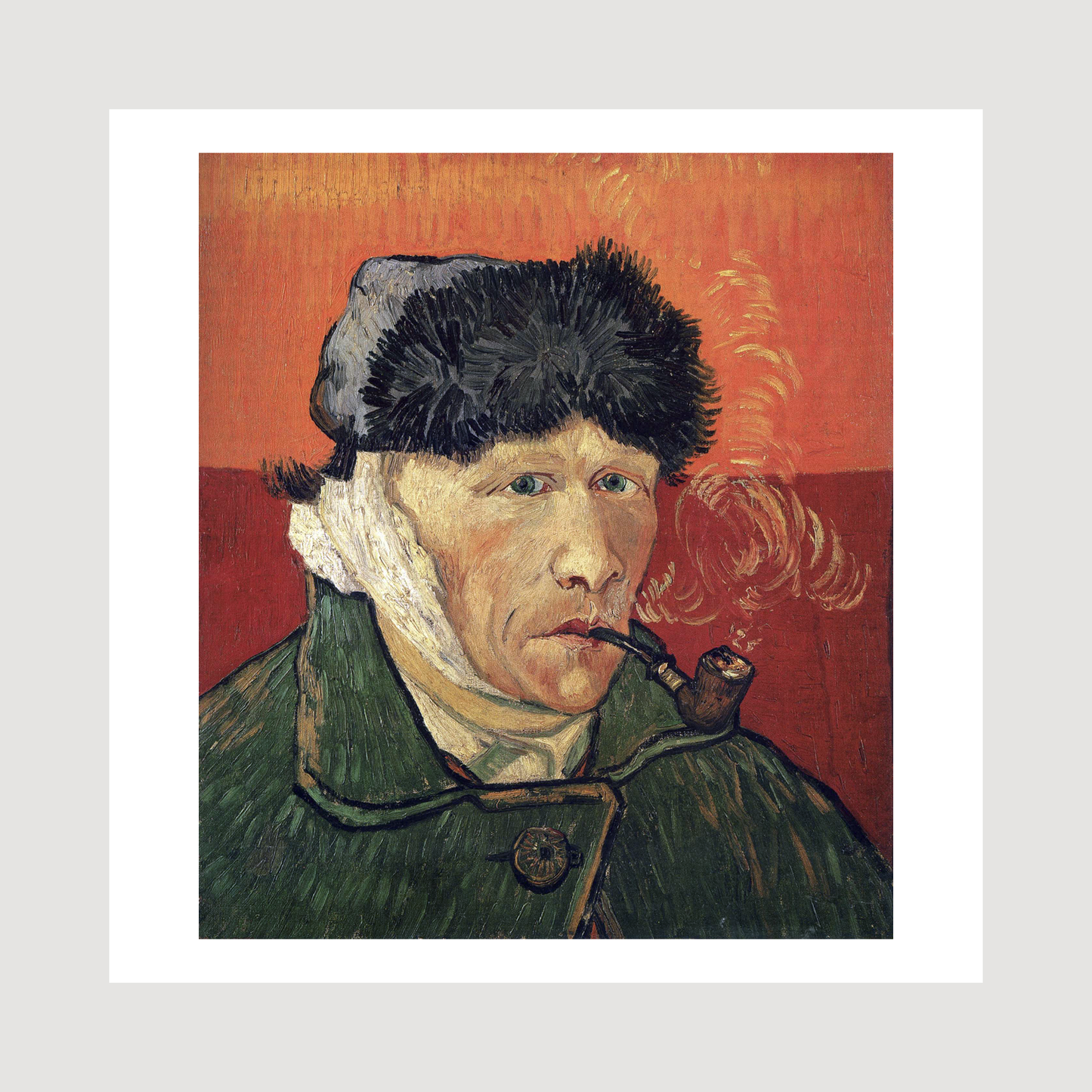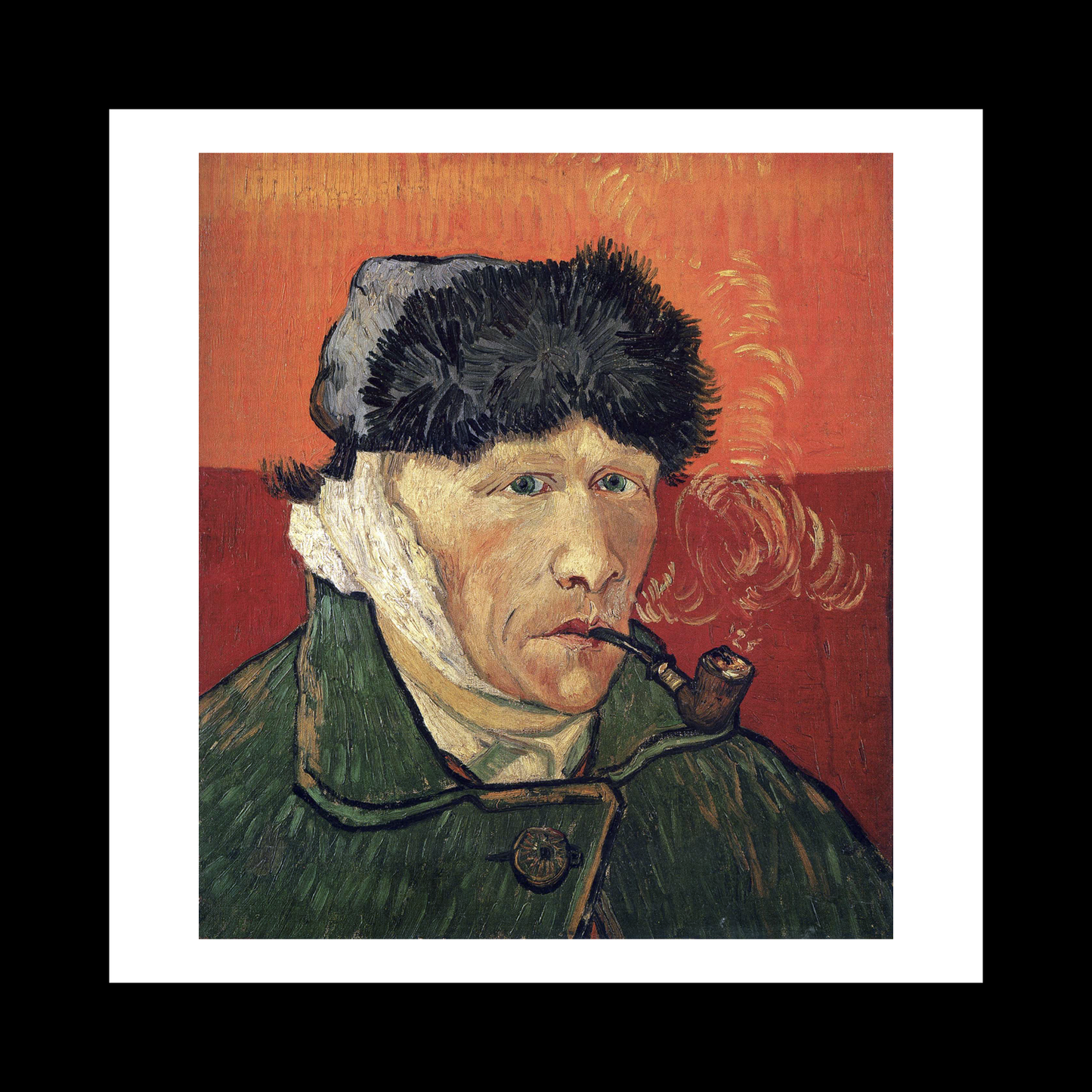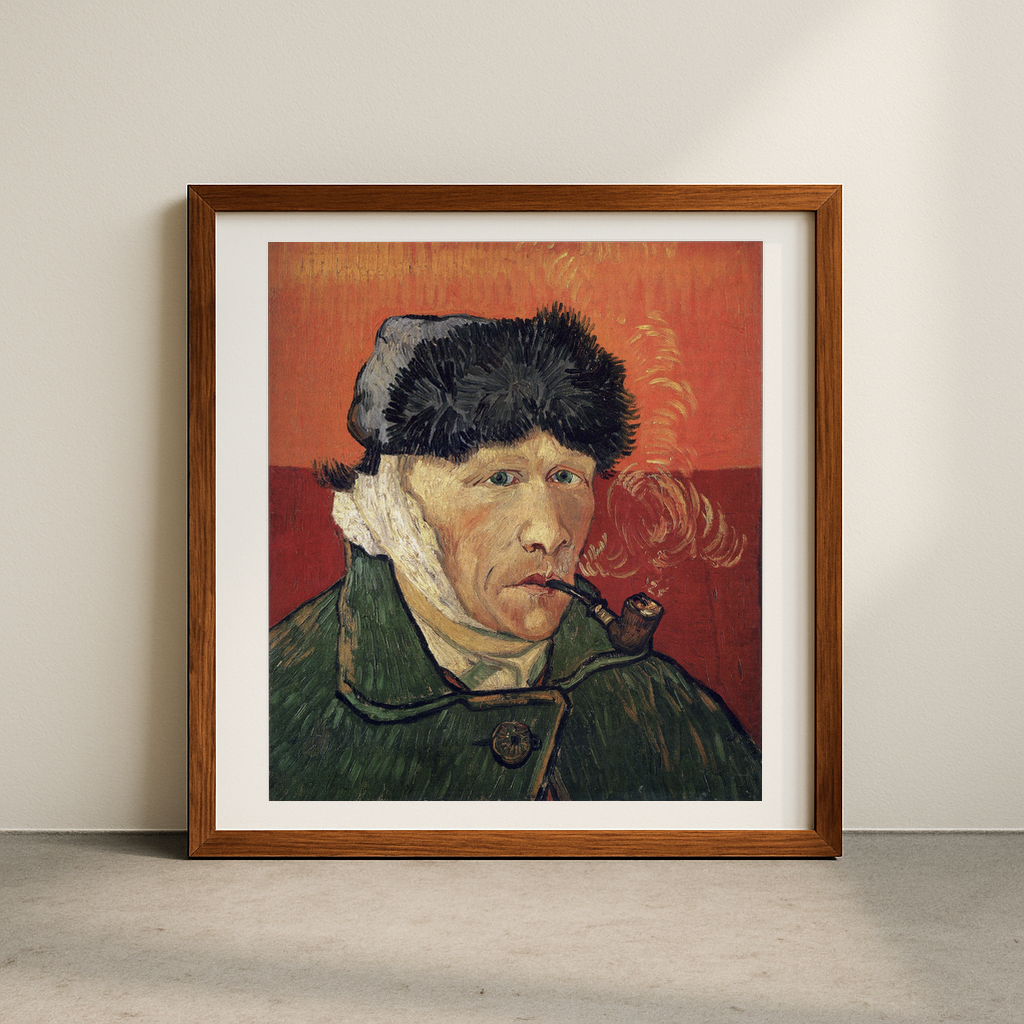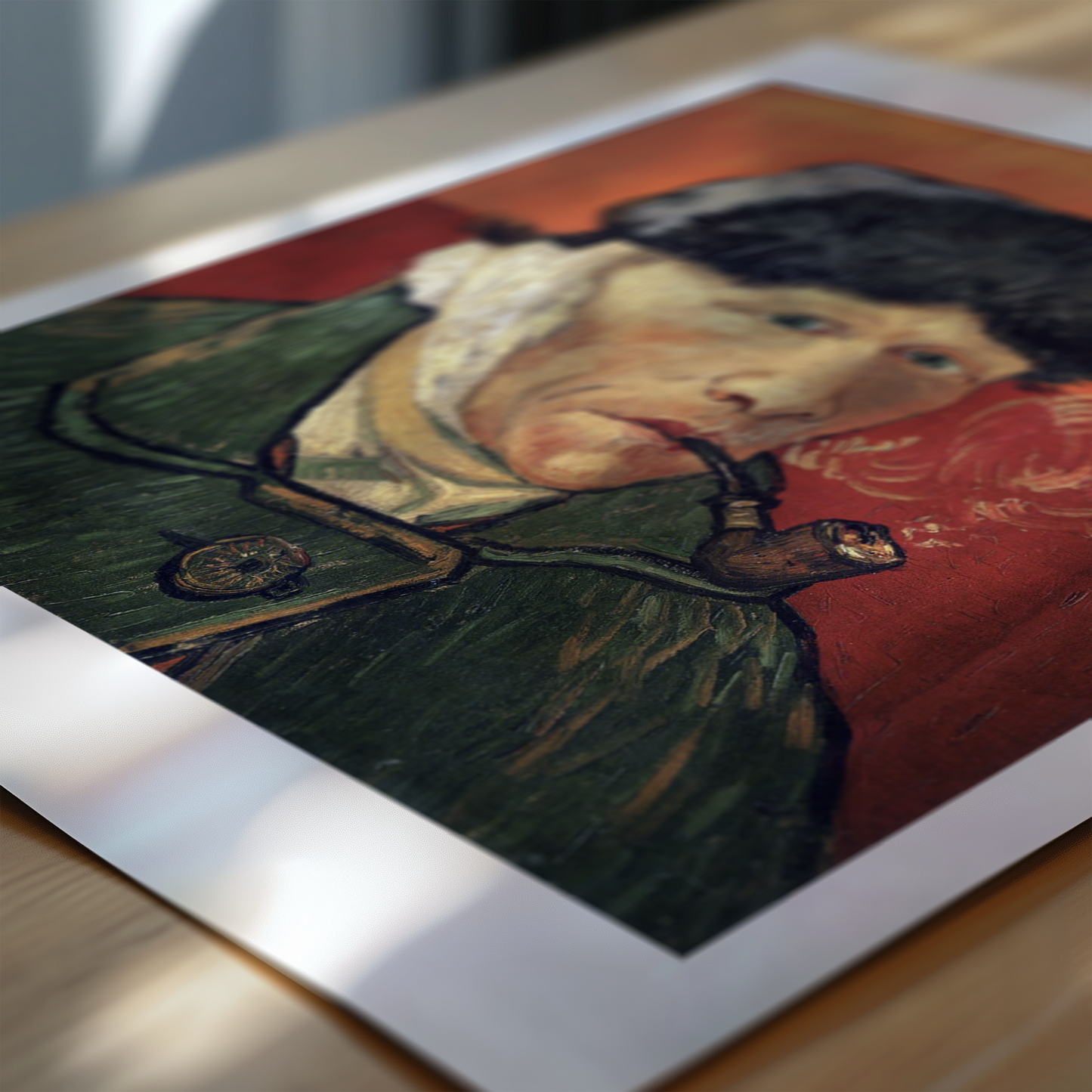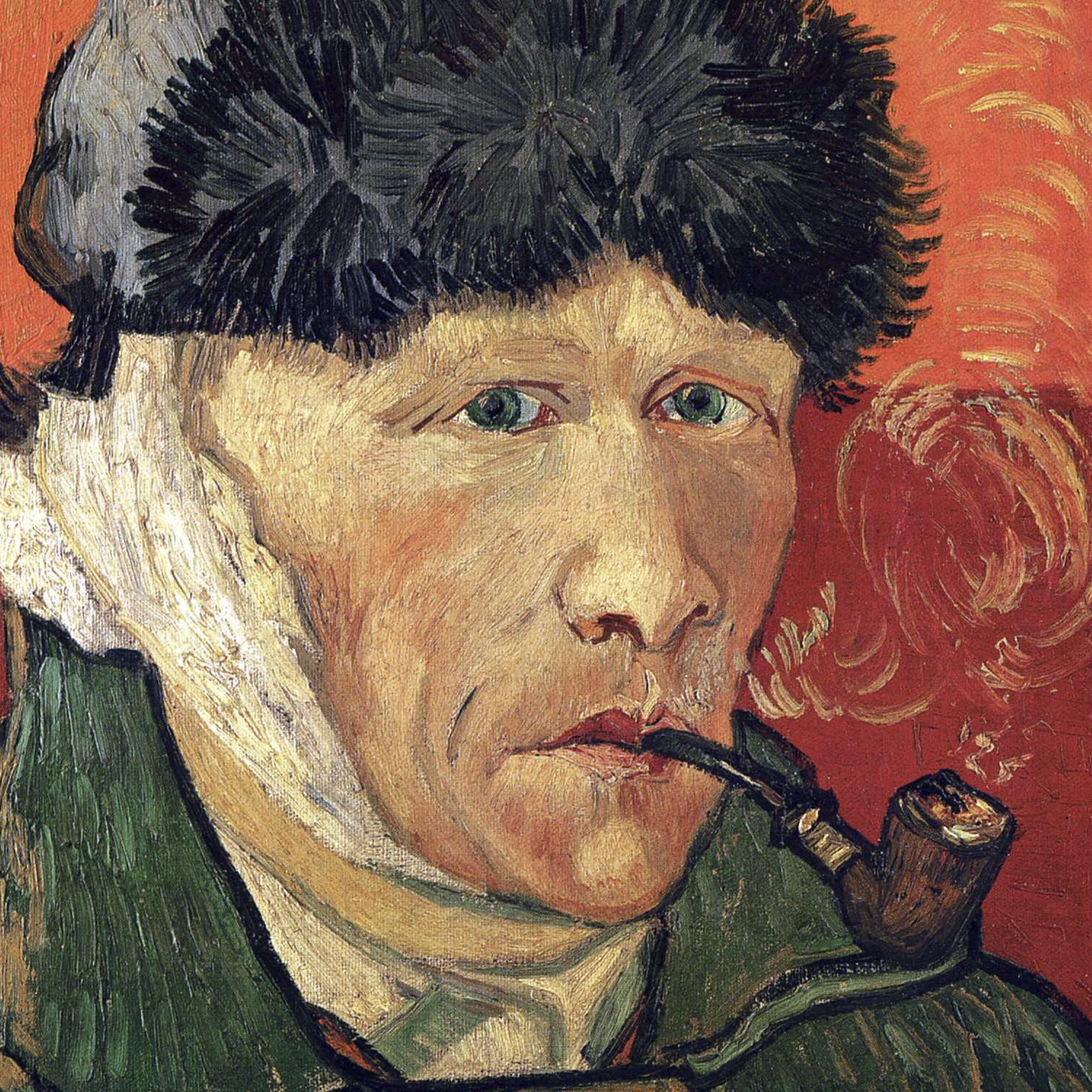1
/
of
6
Self-Portrait Bandaged
Self-Portrait Bandaged
Regular price
£12.45 GBP
Regular price
Sale price
£12.45 GBP
Taxes included.
Quantity
Couldn't load pickup availability
Van Gogh's 'Self-Portrait with Bandaged Ear and Pipe' (1889) is a striking example of the artist's distinctive post-impressionist style, characterised by bold brushstrokes and vibrant colours. The painting shows Van Gogh in three-quarter view, wearing a green overcoat and a bandaged ear, while smoking a pipe. The background features a Japanese print on the wall, reflecting his deep appreciation for Japanese art, while the rich colours and thick impasto technique create a sense of emotional intensity and movement.
This self-portrait was created shortly after Van Gogh's infamous December 1888 incident where he cut off part of his left ear during a mental health crisis in Arles, France. Interestingly, due to the mirror image in which he painted himself, the bandaged ear appears on the right side of the portrait rather than the left. The inclusion of the pipe and his steady gaze suggests a deliberate attempt to present himself as composed and dignified despite his struggles.
The painting's emotional depth is enhanced through Van Gogh's use of complementary colours - the artist's reddish beard contrasts with the green coat, while the warm flesh tones stand out against the cool blue-green background. This work is particularly significant as it represents Van Gogh's resilience and dedication to his craft during one of his most challenging periods. Of the 36 self-portraits he created throughout his lifetime, this one perhaps most poignantly captures his complex psychological state and unwavering artistic vision.
The artist's choice to include everyday elements like his pipe and the Japanese print provides intimate glimpses into his personal life, while his expressive brushwork and intense colour choices reveal the emotional turbulence beneath his seemingly calm exterior. This painting serves as a powerful exploration of identity, suffering, and artistic determination.
View full details
This self-portrait was created shortly after Van Gogh's infamous December 1888 incident where he cut off part of his left ear during a mental health crisis in Arles, France. Interestingly, due to the mirror image in which he painted himself, the bandaged ear appears on the right side of the portrait rather than the left. The inclusion of the pipe and his steady gaze suggests a deliberate attempt to present himself as composed and dignified despite his struggles.
The painting's emotional depth is enhanced through Van Gogh's use of complementary colours - the artist's reddish beard contrasts with the green coat, while the warm flesh tones stand out against the cool blue-green background. This work is particularly significant as it represents Van Gogh's resilience and dedication to his craft during one of his most challenging periods. Of the 36 self-portraits he created throughout his lifetime, this one perhaps most poignantly captures his complex psychological state and unwavering artistic vision.
The artist's choice to include everyday elements like his pipe and the Japanese print provides intimate glimpses into his personal life, while his expressive brushwork and intense colour choices reveal the emotional turbulence beneath his seemingly calm exterior. This painting serves as a powerful exploration of identity, suffering, and artistic determination.

